Artist That Did All Black Painting With Cross
7 essential painting techniques for artists
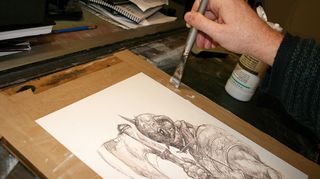
Having a basis in fundamental painting techniques and styles is going to drastically help when you're starting out on your artistic journey using paint. In essence, this means logging some knowledge of colour, tone, brushwork, texture and composition to empower you to create your own masterpieces with confidence.
In this post, we set out seven essential painting techniques sure to get you painting like a pro in no time at all. For more, we suggest heading over to the best how to draw tutorials, to make sure you've got the basics covered there. And if you want to learn more about art terminology, then see our piece on common art terms. If you're just making the transition to canvas, take a look at our guide to canvas painting for beginners, or buy your own canvas with our guide to getting the best oil paint canvas.
01. Underpainting
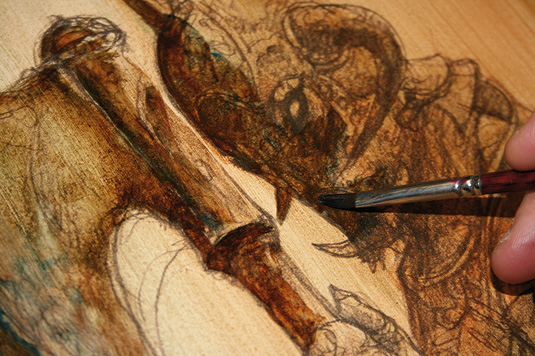
It's important to never work from white when using oils or acrylics. Create an underpainting in burnt umber or a mix of burnt sienna and phthalo blues to establish shadows and values. Acrylics are probably the best medium to use at this stage as they're quick-drying and permanent.
- Best painting and drawing apps for iPad
Work paint up from thin to thick, especially when using slow-drying paints. It's impossible to work on top of heavy, wet paint. In the same way, work up to highlights, adding the brightest (and usually heavier) paint at the end. Have a roll of kitchen towel to hand to clean brushes and remove any excess paint.
02. Blocking in
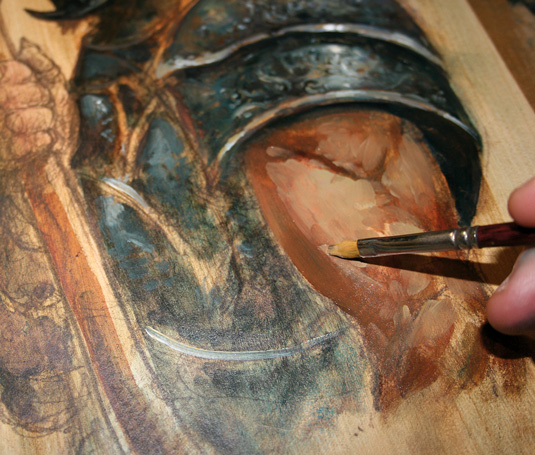
Brushes come in a number of shapes and with different fibre types, all of which give very different results. The key is to try all of them as you paint. The most versatile are a synthetic/sable mix – these brushes can be used with most of the different paint types. Brushes come in flat and round types and it pays to have a selection of both. Check out our guide to picking the right brush to learn more.
It's useful to work with a range of brushes. For most of the early work, use larger, flatter and broader brushes. A filbert is a good general brush for blocking in form and paint. It has a dual nature, combining aspects of flat and round brushes so it can cover detail as well as larger areas. Then use smaller brushes only at the end of the painting process.
03. Building up texture
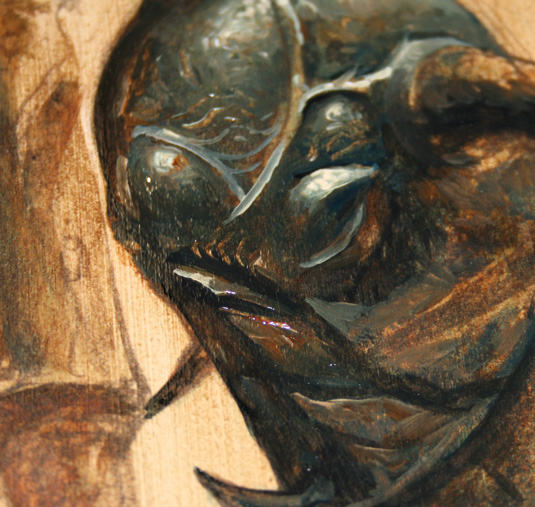
Have a dry, flat brush that you can use to blend your paint and create smooth transitions. Maybe you like lots of texture and like to see brush marks in your own work. Almost anything can be used to add texture to your paint. There are ready made texture media available, but I have seen items such as egg shell and sand used to add interest to a painting.
One tip is to use an old toothbrush to spatter your image with paint. This can be remarkably effective at suggesting noise and grain.
04. Dry brushing
This is a method of applying colour that only partially covers a previously dried layer of paint. Add very little paint to your brush and apply it with very quick, directional strokes.
This method tends to work best when applying light paint over dark areas/dried paint and is useful for depicting rock and grass textures.
05. Sgraffito
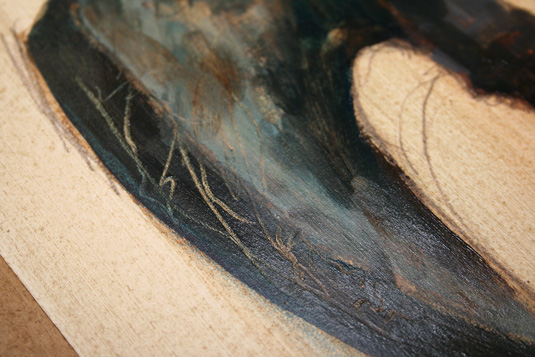
Removing paint can be as important as applying it. Sgraffito is the term used when you scratch away paint while it's wet to expose the underpainting. It's especially useful when depicting scratches, hair, grasses and the like.
You can use almost any pointed object for this – try rubber shaping tools or the end of a brush.
06. Glazing
Glazing is the process of laying a coat of transparent paint over a dry part of the painting, and it's used for intensifying shadows and modulating colour. A light transparent blue over dry yellow will, of course, create green.
07. Painting with mediums
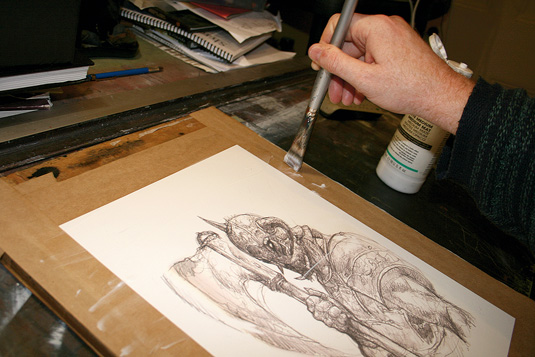
Mediums are fluids that can be added to paint to modulate its consistency, drying time and texture. In the case of acrylics, you get different mediums that make the paint matte or gloss. However, I tend to use the matte medium mainly to seal my paper or board, so paint doesn't soak into it.
This article originally appeared in the ImagineFX special bookazine How to Paint and Draw .
Related articles:
- The best YouTube art channels
- Digital art software for creatives: Create stunning digital art
- Watercolour techniques: Essential skills for every artist
Bristol-based artist Dave Kendall began his career by illustrating book covers, and more recently has worked on trading cards and comics. He works in both traditional and digital media.
Related articles
Artist That Did All Black Painting With Cross
Source: https://www.creativebloq.com/art/painting-techniques-artists-31619638